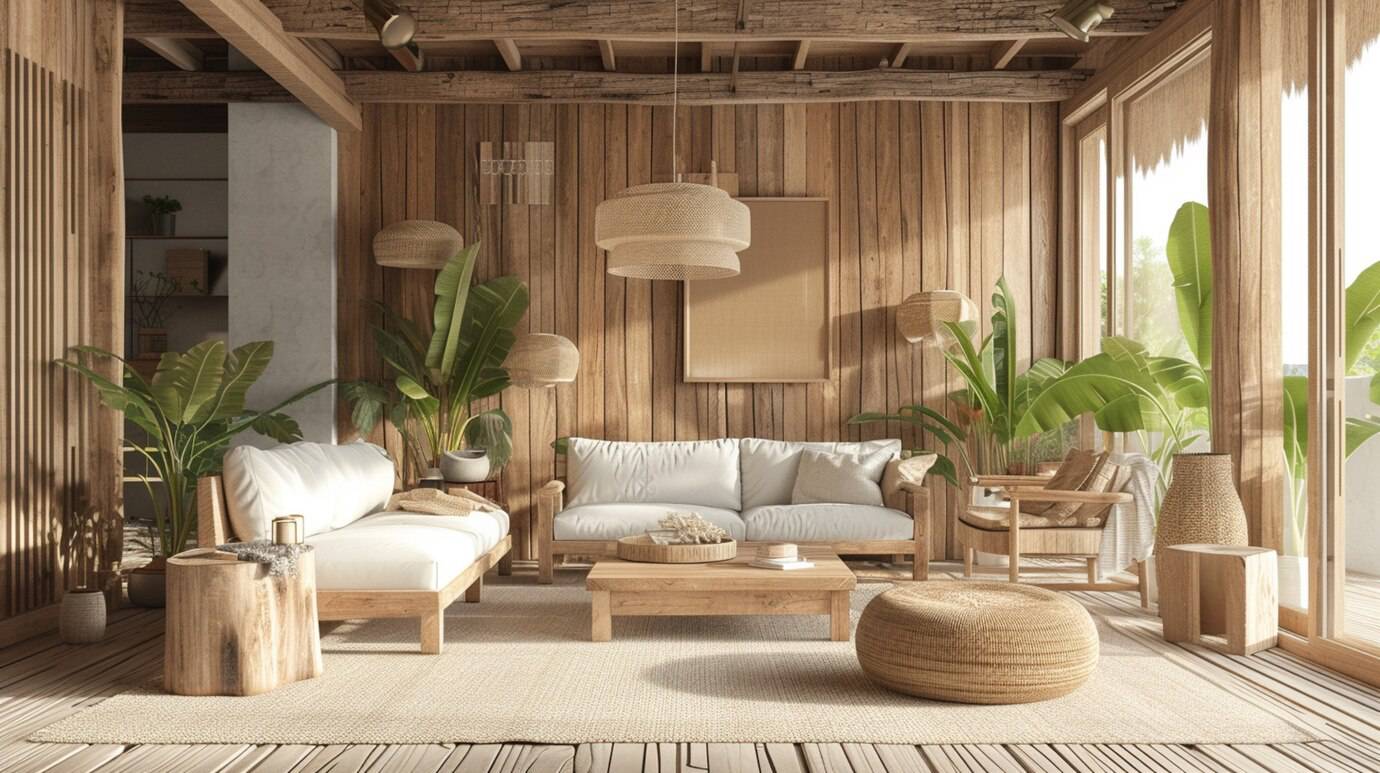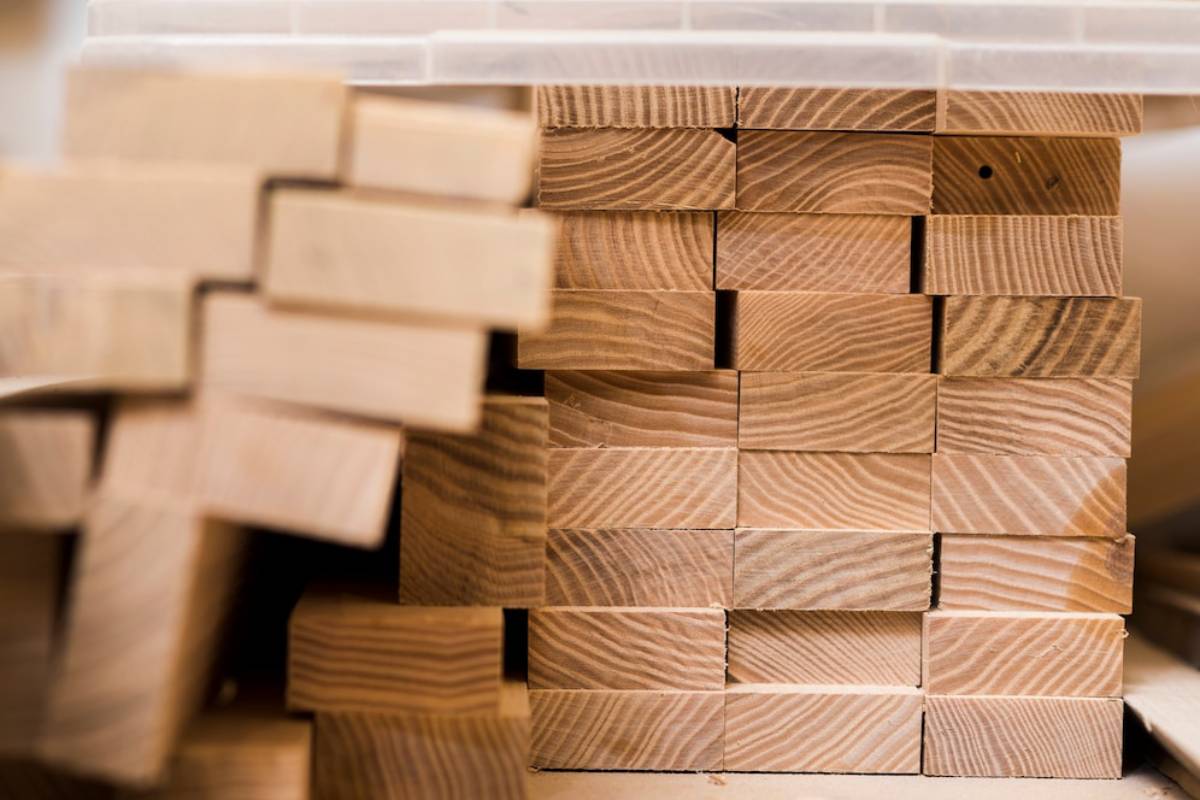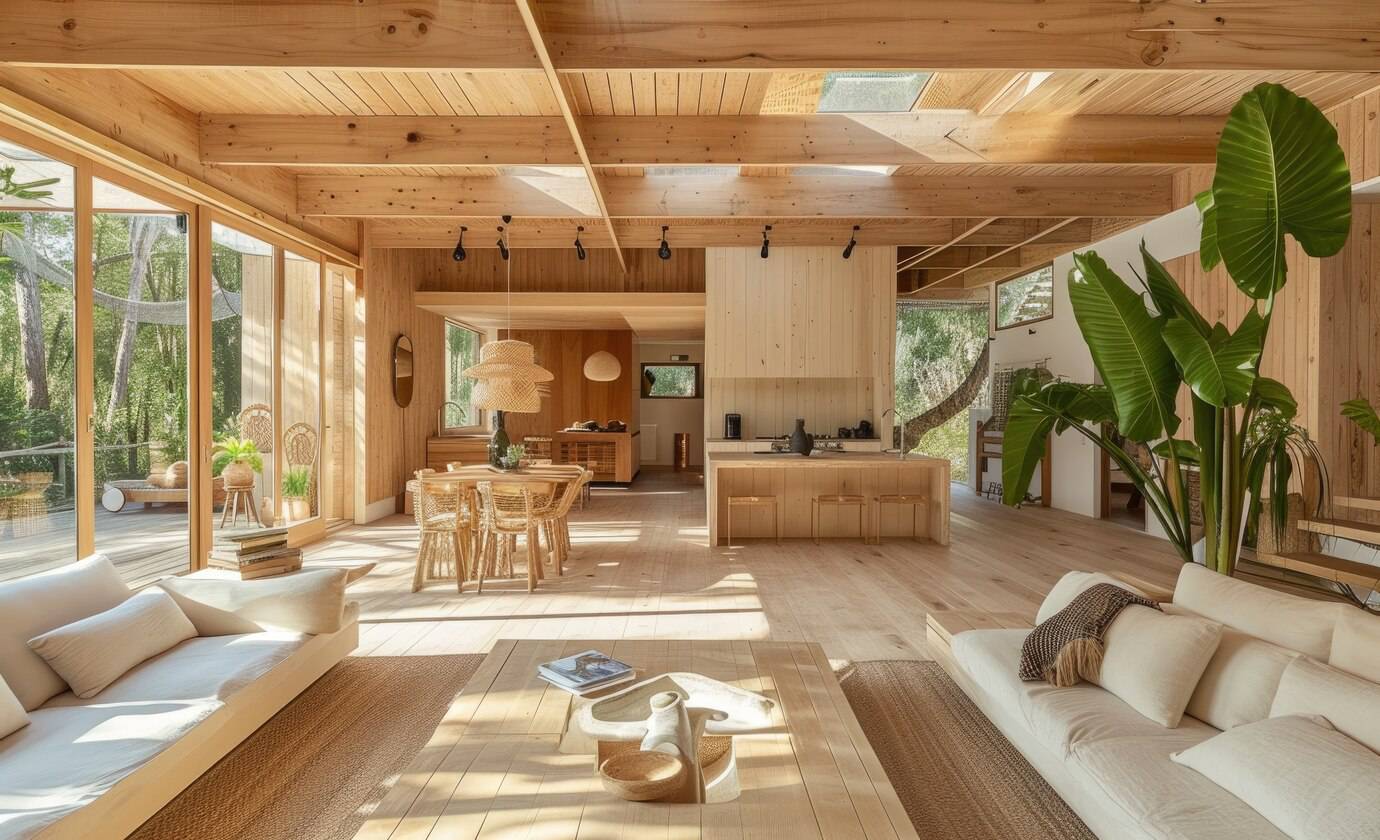
Eco-Friendly Wood Choices for Scandi Interiors
Picture a Scandinavian interior — calm, clean, softly lit. Now zoom in. See that pale wood floor? The smooth oak table? That minimalist bench in the hallway? Wood is the quiet backbone of Scandinavian design, grounding the aesthetic in nature. But not just any wood. Increasingly, sustainable wood is the material of choice — for reasons both ethical and aesthetic.
In an era where conscious living is no longer optional, combining Scandinavian materials with sustainable principles is a powerful way to honour both the earth and your space. Whether you’re renovating a room or choosing your next piece of furniture, understanding the role of green home design is key to making decisions that last — in both style and responsibility.
In this post, you’ll learn which woods align with eco-conscious interiors, how to recognise truly sustainable sources, and how to style your home with materials that not only look good but do good. We’ll mix expert insight, practical advice, and a bit of storytelling to bring it all to life — Scandi style.
Why Wood Is So Central to Scandinavian Design
The Nordic Connection to Nature
Scandinavian design has always reflected its natural surroundings. Long winters, limited daylight, and a cultural emphasis on comfort have led to an interior style that feels warm, bright, and tactile. Wood is at the heart of this — used in floors, furniture, cabinetry, and even accessories.
- Pine and birch are favourites in Sweden and Finland — light, local, and easy to shape.
- Oak and ash offer durability and a slightly warmer tone.
- Driftwood and reclaimed timber add character and a rustic feel.
But as demand for “Scandi style” spreads globally, so does the responsibility to choose wood that’s harvested and processed sustainably.
What Makes Wood “Sustainable”?
Not all timber is created equal. Some practices degrade forests and ecosystems, while others help restore them. Choosing sustainable wood means opting for materials that are responsibly harvested, ethically sourced, and managed to ensure long-term environmental balance.
Key Sustainability Criteria
- FSC or PEFC Certification: Look for the Forest Stewardship Council (FSC) or Programme for the Endorsement of Forest Certification (PEFC) logos. These ensure the wood comes from responsibly managed forests.
- Local Sourcing: Timber sourced close to home reduces transportation emissions and supports local economies.
- Reclaimed or Recycled Wood: Reusing timber reduces demand for new logging and gives existing wood a second life.
- Fast-Growing Species: Woods like pine and bamboo regenerate quickly and are ideal for eco-focused interiors.
Best Eco-Friendly Wood Types for Scandi Interiors
Here’s a breakdown of wood types that tick both the sustainability and aesthetic boxes — perfect for creating that clean, calming Scandinavian feel.
1. European Oak

- Sustainability: FSC-certified European oak is a top choice due to its managed forestry systems.
- Aesthetic: Warm golden tones, visible grain, and timeless appeal.
- Best For: Dining tables, shelving, flooring.
Tip: Use a natural oil finish to protect oak and highlight its grain without harsh chemicals.
2. Pine
- Sustainability: Grows rapidly and is widely available in northern Europe. Often used in FSC-certified Scandinavian furniture.
- Aesthetic: Pale yellow or creamy tone, with a soft grain that suits minimal interiors.
- Best For: Bedroom furniture, panelling, painted finishes.
Personal Story: When Lina, a teacher from Bergen, refurbished her home, she chose locally sourced pine for her walls and bed frame. “It made the room feel warm even in winter, and knowing it was sustainably grown added peace of mind,” she said.
3. Birch
- Sustainability: Common in the Nordic region and responsibly harvested in European forests.
- Aesthetic: Smooth, even texture with a slightly pinkish hue.
- Best For: Plywood applications, cabinetry, modern furniture frames.
Why Birch Works: It’s subtle and elegant, making it a go-to for the sleek silhouettes typical of Scandi design.
4. Ash
- Sustainability: Ash trees grow quickly and are often available in responsibly managed European forests.
- Aesthetic: Light-coloured with strong grain contrast — perfect for character-rich surfaces.
- Best For: Chairs, benches, flooring, and kitchen worktops.
Style Note: Pair ash with matte black or soft grey accents for that classic modern Nordic look.
5. Bamboo (Yes, It Counts!)
- Sustainability: Technically a grass, not a tree. Grows rapidly and regenerates without replanting.
- Aesthetic: Clean lines, subtle grain, often pressed into uniform panels.
- Best For: Cutting boards, kitchen accessories, shelving.
Eco Insight: While not native to Scandinavia, bamboo’s low-impact credentials make it a popular import for eco-minded designers.
How to Style Sustainable Wood at Home
Just because something is eco-friendly doesn’t mean it can’t be stylish. The key is to mix materials thoughtfully, respect the wood’s natural beauty, and design around usefulness as much as aesthetics.
Create a Light and Airy Base
- Use pale wood flooring (like whitewashed pine or ash) to reflect light.
- Layer with neutral rugs in wool or jute to add softness and texture.
Let the Grain Be the Hero
- Avoid heavy stains or opaque paint — instead, use transparent oils or waxes.
- Pair raw wood with ceramics, cotton, or linen for a layered Nordic texture.
Keep It Functional
- Choose multi-purpose pieces — like a bench that doubles as a side table.
- Floating wooden shelves or peg rails offer form and function without clutter.
Real-World Example: In her Copenhagen flat, Mette styled her oak dining table with a reclaimed wood bench and two woven chairs. “It’s not matchy-matchy, but it feels honest,” she says. “Everything has a story.”
Avoiding Greenwashing: What to Watch Out For
Just because something says “eco” on the label doesn’t mean it’s truly sustainable. Here’s how to shop smart.
Ask These Questions:
- Is it certified? FSC or PEFC are must-haves.
- Where was it sourced? European or local woods are generally more sustainable than exotic imports.
- Is it solid or veneered? Veneers over particleboard may hide unsustainable cores.
- What finishes are used? Look for water-based stains or natural oils.
Red Flag Words:
- “Eco-style” without certification
- “Natural finish” that contains VOC-heavy chemicals
- “Sustainable mango wood” from unclear sources
Pairing Wood with Other Sustainable Scandinavian Materials
A green interior is about harmony — not just isolated choices. Complement your wood elements with other sustainable Scandinavian materials to complete the picture.
Great Pairings
- Linen and Cotton: Natural, breathable textiles for cushions, curtains, or throws.
- Wool and Sheepskin: Ethically sourced rugs or seat covers.
- Ceramics and Clay: Local pottery or hand-thrown decor adds tactile warmth.
- Glass: Recycled or mouth-blown glass vessels reflect light and reduce plastic use.
Tip: Aim for a restrained palette. Let the materials do the talking — no need to overdecorate.
Sustainable Wood in Small Spaces
Living in a flat or compact home? You don’t need to overhaul everything to bring in sustainable wood.
Ideas for Smaller Homes
- Slim wall-mounted shelves in ash or birch.
- Foldable tables or stools in bamboo.
- Wooden utensil holders or trays in the kitchen.
- Minimalist headboards made from reclaimed wood planks.
Bonus: These pieces can often be moved or reused in different rooms as your needs change — very much in line with the Scandinavian lagom approach (just enough, not too much).
Where to Buy Sustainable Scandinavian Wood Products
European & Global Brands
- Skagerak (Denmark): FSC-certified teak and oak furniture with a timeless design.
- Muuto (Finland): Modern Nordic shapes using sustainable practices.
- We Do Wood (Denmark): Stylish bamboo furniture designed for circular living.
UK-Based Sources
- Made.com: Offers FSC-certified wood ranges in Scandinavian styles.
- Tom Raffield: Beautiful British-made pieces using steam-bent wood.
- Etsy: Search for “Scandi reclaimed wood furniture” for artisan options.
Beautiful Interiors, Gentle Footprints

Sustainable living doesn’t mean sacrificing comfort or style — especially when you follow the timeless principles of Scandinavian design. By choosing sustainable wood for your interiors, you’re not just making a statement of taste. You’re making a statement of values.
Whether it’s a handcrafted bench made from reclaimed oak, a birch bedside table, or a pine bookshelf from a local artisan, every piece tells a story — one that connects you to nature, tradition, and a more conscious way of living.
So, what will your next choice be? Will it be a material that warms your space and your conscience? Start small if you need to — a shelf, a tray, a stool. Let the wood speak for itself.


